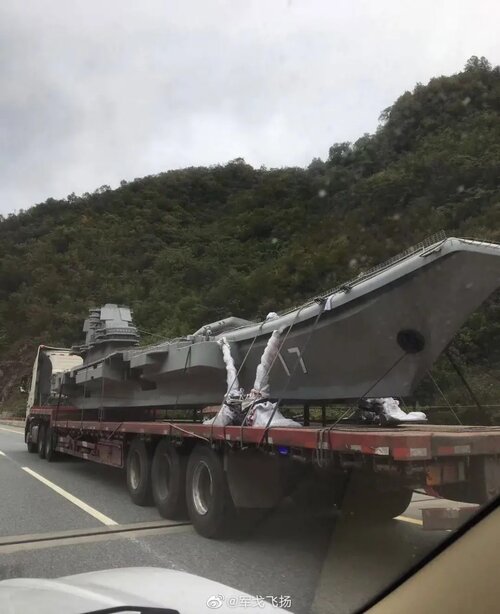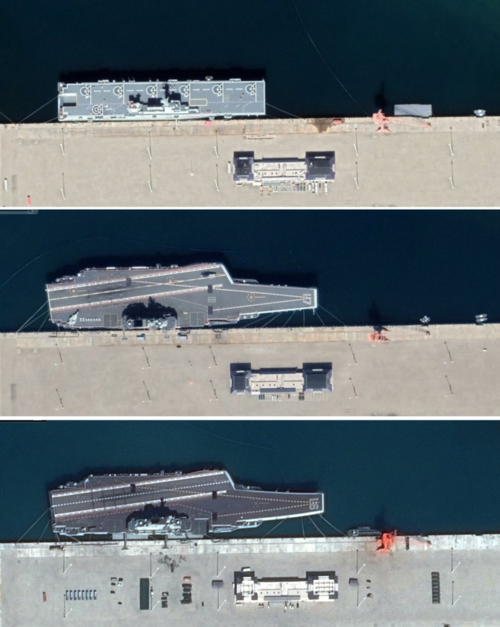Mission impossible II: the battle to get China's aircraft carrier home
PUBLISHED : Tuesday, 20 January, 2015, 1:19am
UPDATED : Tuesday, 20 January, 2015, 5:46pm
After sealing deal for China's first aircraft carrier, Xu Zengping had a new challenge: taking it home
Hong Kong-based businessman Xu Zengping pulled off the unlikeliest of military coups in 1998 - he convinced a Ukrainian shipyard to sell him an unfinished Soviet aircraft carrier for US$20 million. Xu, a former member of the Guangzhou Military Command basketball team, had been approached by naval officials to buy the carrier on China's behalf but he had to do it with his own money and without the support of Beijing.
Xu sealed the deal over several days of alcohol-soaked negotiations and by April 30, 1999, with the final payment made, the massive vessel was his - he just had to get it home to China.
HOMEWARD BOUND
The Ukrainian shipyard had made it clear that it had no responsibility to get the carrier from the Black Sea to China. It was Xu's problem to get the vessel through to the Atlantic and onwards to its new home port of Dalian in Liaoning province.
Xu's team enlisted International Transport Contractors' (ITC) Netherlands firm to tow it all the way, and on June 14, 1999, four months after the final payment, the crew and the ITC's Sable Cape tugboat weighed anchor. It was plain sailing until they reached the Bosphorus Strait, Turkey's maritime boundary between East and West.
Relations between China and the United States had taken a downturn in the weeks before Xu's crew had left port. On May 7, the US bombed the Chinese embassy in Belgrade during the Nato air war over Yugoslavia, igniting anti-American protests in China.
In the fallout, Turkey, an ally of US-led Nato, would not allow the carrier through the strait. The crew waited a month, but Turkey was adamant and the carrier returned to Ukraine.
"I felt so helpless when the ship was waiting at the mouth of the Bosphorus Strait. At one point, I was prepared for the worst: we would rather have the giant ship go to the bottom of the strait than let it fall into the hands of states hostile to Beijing, like Japan," said Xu.
The vessel languished in the Black Sea port another 15 months before the tide turned in Xu's favour. In Beijing, after years of opposition, the leadership was re-thinking the project. Defence was back on the agenda after the embassy bombing and having an aircraft carrier to fend off US might was more appealing
In April, 2000, then-president Jiang Zemin visited Ankara. He promised to encourage Chinese tourists to visit Turkey and to open up his country's markets to Turkish goods. This did the trick. On August 25, 2001, Turkey decided to allow the carrier through to the Mediterranean.
The carrier headed out again into the Black Sea. The Turkish authorities closed the strait on November 1 to let the carrier and its escort of 11 towboats and 15 emergency vessels through.
But storms snapped the cables connecting the carrier to the towboats, putting the project in jeopardy once again. At one point, the carrier drifted unsecured for four days in the Aegean near Skyros island before the tugs were able to rein it back in.
Over the rest of the year, the carrier and a series of tugs inched their way across the Mediterranean, through the Strait of Gibraltar, and out into the Atlantic. It rounded Africa's Cape of Good Hope, navigated the Strait of Malacca and on March 3, 2002, five tugs towed it into Dalian.
Xu said it was like seeing a "lost son find his way home"."But I didn't feel real relief until it was formally commissioned by our navy 12 years later. The feeling was like finally seeing my child grow up and marry."
BITTERSWEET
It was gratifying but bittersweet for Xu, who was left with a bill for port and towage costs.
"US$20 million was just the auction price of the carrier. In fact, I had to pay at least US$120 million for the deal from 1996 to 1999. But I still haven't received one fen from our government. I just handed it over to the navy."
To raise the cash, Xu had to sell his palatial home on The Peak at 37 Deep Water Bay Road in 1999 and mortgage his 280,000 sq ft property on Peng Chau.
A source familiar with the carrier deal said Xu was saddled with the costs because many of the naval officials who had approached him to take on the mission had either died or were in jail. "Ji Shengde, the former naval intelligence chief, entrusted Xu to do the deal," the source said. "But Ji was sacked and given a suspended death sentence in 2000 for his role in a Fujian smuggling scandal."
As delays and costs mounted, Xu had to liquidate more of his personal assets. He also had to neglect his own businesses.
He had to borrow from Hong Kong acquaintances, including HK$230 million from one friend.
"I spent 18 years paying back the debt in full, with interest, with the last payment clearing this year. I felt relieved because my friend is now 81 years old, and I promised myself I would clear the debt while he was still alive."
LEGAL MINEFIELD
Xu was trapped in several lawsuits as a result of the debts. "It's like I had three army regiments before the deal, but now I'm just left with a cookhouse," he said.
According to
China's Carrier, a book published by China Development Press, Xu bargained with the State Council for years over compensation, but Beijing would pay only the US$20 million auction price, insisting Xu could be compensated for other costs only if he provided receipts.
"It's just ridiculous and unfair. How could the Ukrainians give receipts for meals, gifts and stacks of US dollar bills? And how about the other losses in raising the money?" a source familiar with the deal said. Those costs included HK$6 million for a document from the Macau government to support his floating casino cover story to buy the ship.
One of Xu's friends said the carrier bills had plunged Xu into severe financial hardship. "For many years, he had to rely on financial support from his friends. He couldn't even pay for his two sons' education overseas. Fortunately, the two boys won full scholarships from two universities in the US because of their basketball talent."
Xu said the central government refused to pay because "the navy didn't have the budget in the late 1990s because of China's poor economy at that time".
"But that's not a good reason. How could [the Chinese government] launch the 'two bombs and one satellite campaign' in the 1960s? It was the country's most difficult time; many people were starving," Xu said, referring to the national programmes to develop atomic and hydrogen bombs and send the country's first unmanned probe into space.
"China has made enormous economic strides in the past two decades, but the government still fails to use that strength to push the country towards sustainable development, with the defence industry one of the key issues."
But the carrier deal gave Xu some consolation. "Some naval experts told me that my deal helped our country save at least 15 years of scientific research," he said. "I was undaunted and it was my will to fulfill my mission. In the end, it indirectly pushed the central government to change its defence policy."










